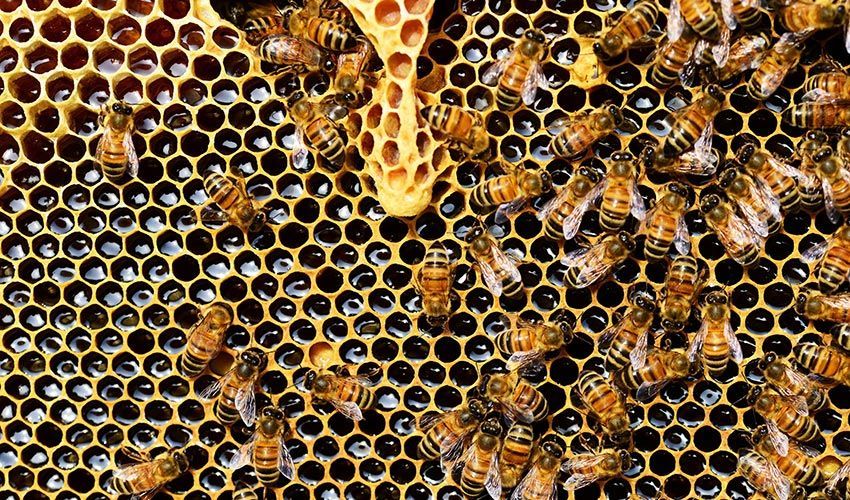Unveiling Royal Jelly's Powerful Benefits
Stanford University scientists have stumbled upon something truly mesmerising: Royalactin, the Royal Jelly's secret weapon responsible for turning the queen bee into a growth titan. But guess what? This enchanting protein doesn't stop there! It also possesses the magical ability to keep a mouse’s embryonic stem cells forever young by thwarting their pesky inclination to grow up and become tissue. Talk about the fountain of youth for cells! Oh, but wait, the plot thickens! These sly scientists have also discovered a mammalian counterpart named Regina (yes, they clearly have a flair for naming things), who shares the same extraordinary powers as Royalactin. What is Regina's mission? Well, to safeguard the innocent, lab-grown embryonic stem cells from the sinister grasp of maturity. You see, these stem cells have a natural tendency to succumb to adulthood when placed in the nurturing confines of a lab. But fear not, for Regina swoops in to save the day, preserving their youthful naïveté for further scientific shenanigans.
Now, why is all of this significant, you might ask? Well, imagine a world where we could unleash an army of mighty stem cells within our own bodies. These incredible warriors, armed with regenerative powers, could mend our organs and regenerate healthy tissues, banishing the bleakness of damage and illness forever. So, let's raise our glasses (or petri dishes) to these groundbreaking findings. Cheers to the day when we can harness the power of Royalactin and Regina, designing drugs that awaken the dormant superheroes within us, granting us the gift of restored vitality and endless potential. Now that's a scientific tale that even the queen bee would be buzzing about! Bees, those buzzing little creatures, aren't just here to pollinate your favourite flowers and sting unsuspecting victims. Oh no, they have a whole host of talents up their tiny sleeves! One of their greatest gifts to us humans is their ability to create products that can do wonders for our health. Sure, we all know about honey and its sweet deliciousness, but there's more to the bee's repertoire than meets the eye.
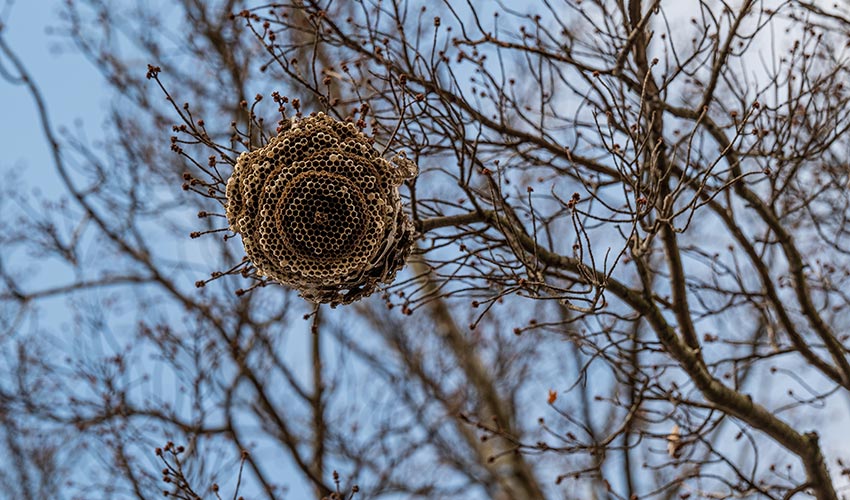
Take Royal Jelly, for instance. This nutritious gem is a carefully guarded secret, only shared amongst the elite in the hive. Nurse bees, like the dedicated guardians of the queen, produce this magical substance solely for her enjoyment. And man! Does it do wonders! Scientists at Stanford University dug deep into the mystery of Royal Jelly and uncovered its hidden secret. Turns out, there's a protein lurking within this wondrous jelly called Royalactin, or the oh-so-fancy MRJP1 for the science-minded readers. This sneaky little protein is responsible for the queen's massive growth and royal status. But here's where things get really intriguing. Hold on to your lab coats, folks, because this Royalactin has a magical talent as it can keep embryonic stem cells young and sprightly.
Yes, you heard that right. Stem cells, the superheroes of our bodies, have met their match in the form of this regal protein. The Stanford researchers stumbled upon this mind-boggling discovery and started daydreaming about what it could mean for us normal humans. Wouldn’t it be a miracle? A world where damaged organs could regenerate themselves, where hearts, eyes, skin, and even spinal cords could be repaired and rejuvenated. But wait, there's more! These scientists didn't just uncover the secrets of the bee kingdom, they also stumbled upon a similar protein found in mammals. And because they were feeling fancy, they named it Regina, a true homage to the queen bee herself. Like its bee buddy Royalactin, Regina possesses the fantastic ability to keep embryonic stem cells in their innocent and untainted state.

So, here we are, my friends, on the precipice of a scientific revolution. The discoveries made by these bee-loving geniuses have opened doors to new possibilities, giving hope for the future of medicine. They've uncovered the innate program for stem cell self-renewal, a code that holds the keys to unlocking the mystery of regeneration in creatures big and small. As the authors of this mind-blowing study rightfully declared, this dazzling revelation has enormous implications in understanding the molecular wizardry behind stem cell fate. So let's raise a toast to these incredible bees, the ultimate heroes of the insect world, for their sweet gifts and the potential they hold for healing our weary bodies. I raise my glass to the bee-utiful secrets hidden in their buzzing hives!
Researchers Discover Program for Stem Cell Self-Renewal
Embryonic stem cells, the result of a swanky union between an egg and a sperm, are truly fascinating little things. You see, three days after the egg gets lucky, an inner cell mass emerges and guess what? Those cheeky cells are the embryonic stem cells that have the potential to transform into a fully-formed fetus. Talk about starting life with a bang! Now, these stem cells are like magical chameleons, capable of morphing into any type of tissue you can imagine. They're the shape-shifting superheroes of the biological world, ready to create an entire living being, whether it's a creature of the animal kingdom or a fancy human. They're pluri-potential, meaning they can do it all.
But hold your horses, folks, because here's the twist. Adult stem cells, while still pretty impressive, are like those capable multi-taskers who can handle several jobs but not quite all of them. They're multi-potential, able to form only specific types of tissue, not the whole kit and caboodle like their embryonic counterparts. Now, here's where the scientific grapevine starts buzzing. It seems our clever researchers have come across a little conundrum. You see, these embryonic stem cells, when grown in the laboratory, have a rebellious streak. They'll quickly grow up and start sprouting into mature tissue cells faster than a teenager discovering their fashion sense. Oh, the audacity!

So, in order to use these cells for research and potential therapies, scientists need to find a way to keep them in their youthful, "naïve" state for as long as possible. In the past, they would use fancy molecules known as inhibitors to throw some shade on the cells' maturing tendencies. It was like holding them back from attending the grown-up party they weren't invited to. But brace yourself for some surprising news, my friends! A team of clever minds stumbled upon a regal revelation. They found that by adding a substance called Royalactin to the cellular culture, they could put the kibosh on those rebellious stem cells and keep them young and pliable. It was a breakthrough nobody saw coming, like finding a diamond ring at a garage sale.
Now, you may be wondering, how on earth does this Royalactin, with its majestic name, achieve this miracle? Well, my dear curious minds, that's the million-dollar question. You see, normally, scientists relied on a leukemia inhibitor factor to keep those stem cells in line. But it turns out this regal ingredient, Royalactin, performs the same trick. It's as if the cells receive a royal decree to stay in their embryonic state and not go off gallivanting into the land of mature tissue. So, there you have it, ladies and gentlemen. The world of stem cells just got a little bit wittier and more intriguing. Who would have thought that adding a touch of Royalactin would keep those feisty embryonic stem cells in check? Now, it would be amazing if only we could add a dash of Royalactin to our own lives and prevent ourselves from growing up too fast! Cheers to the scientific surprises that make us go "Wow" and "Why not?"
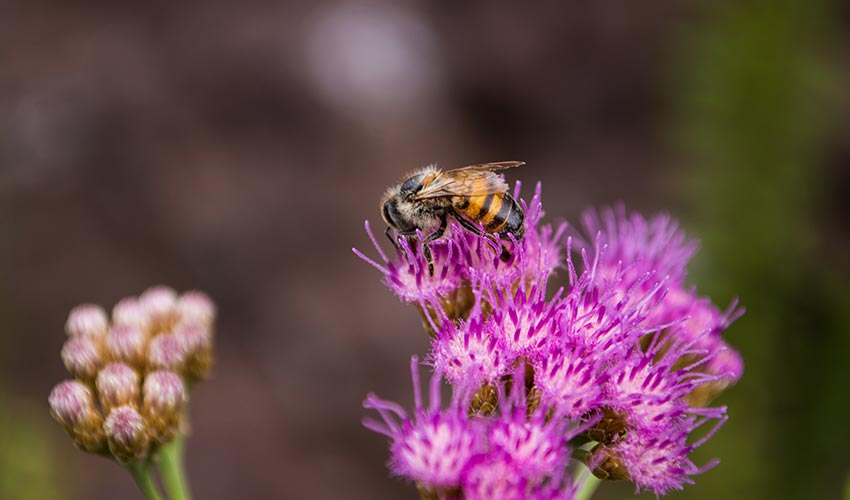
Royalactin-Like Protein Inhibits Embryonic Stem Cells
Once upon a time, in the magical world of biology, it was discovered that mammals, including humans, lack a particular protein called Royalactin. But guess what? Turns out this Royalactin is quite the troublemaker, as it activates a network of genes responsible for keeping those precious embryonic stem cells in their pluripotent state. So, several curious researchers decided to embark on a daring quest to find an answer. Armed with their scientific databases, they scoured the land for human proteins that resembled this Royalactin. Lo and behold, they stumbled upon NHL repeat-containing-3 protein, or NHLRC3, a protein that makes an appearance during the development of mammalian embryos.
Excited by this discovery, the researchers recreated the mouse experiment using the magical NHLRC3, only to find that it triggered the same gene network as Royalactin. Ta-da! The embryonic stem cells maintained their pluri-potency, much to everyone's delight. Kevin Wang, an assistant professor of dermatology and the lead author of the study, couldn't help but comment on this enchanting result. He said, "It's fascinating. Our experiments imply Regina - the mammalian version of royalactin - is like a mystical molecule that rules over pluripotency and the creation of progenitor cells. We've managed to bridge the gap between the mythical and the real!"
With this newfound knowledge, Wang and his team are now determined to explore whether Regina, the mammalian equivalent of Royalactin, possesses the power to influence cell regeneration and wound healing in adult animals. Amazingly, the possibilities are endless! As reported by the wise elders at New Atlas, this remarkable finding could potentially revolutionise the world of embryonic stem cells. Imagine synthetic versions of Regina that can deliver a stock of stem cells inside the human body. These magical drugs could work wonders, mending broken hearts, rejuvenating fading eyes, healing injured spinal cords, and repairing severe burns. The future looks bright indeed!
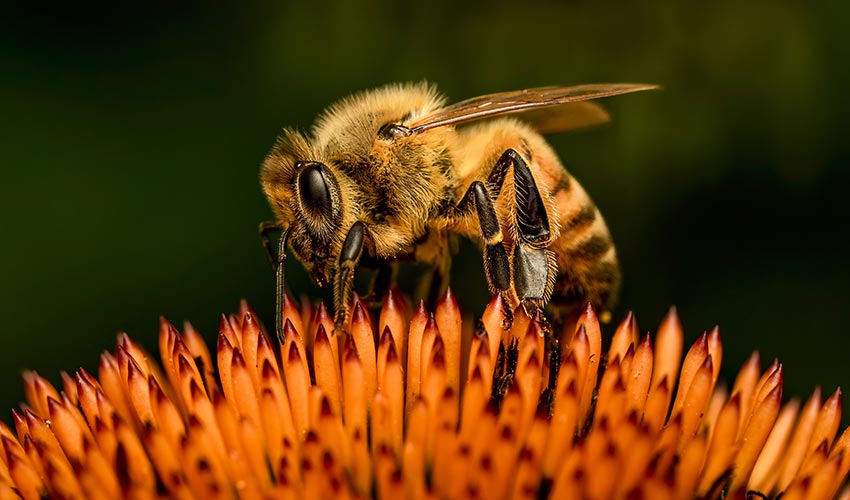
What Is Royal Jelly and How Is It Made?
Now, let's switch gears for a moment and dive into the world of bees. You see, Royal Jelly is a mystical substance secreted by the hardworking honeybees. It's their special food that they create between their sixth and twelfth days of life. This gelatinous, milky substance contains a whole bunch of life-affirming goodness like proteins, sugars, fat lipids, amino acids, vitamins, and minerals. While the worker bees make do with their short lives and inability to reproduce, the queen bee is a different story. She exclusively feasts on this Royal Jelly, which grants her with an extended lifespan and well-developed gonads.
Quite the upgrade, I must say! Apparently, this exclusive diet of Royal Jelly sets the queen bee apart from her fellow bees. It activates certain genes that make her grow larger and become a prolific egg-layer. Talk about being the ruler of the hive! The humble larvae chosen to become the queen, receives only Royal Jelly, while the others enjoy a mix of Royal Jelly, pollen, and honey. The clever researchers have discovered that adding a special ingredient called p-coumaric acid to Royal Jelly affects the development of the bee. Larvae fed this modified Royal Jelly produce adults with reduced ovary development. It seems that consuming royal jelly not only gives the queen-destined larvae a rich and nutritious diet but also protects them from the harmful effects of certain chemicals found in honey and beebread. What a delicious power play! So, there you have it. The worlds of mammals and bees have collided, revealing the remarkable powers of proteins like royalactin and Regina. This is just the beginning of a grand adventure in the land of biology. Who knows what other magical secrets lie waiting to be discovered? Time will tell, my friends. Time will tell…
Health Benefits of Royal Bee Jelly
Once upon a time, in the mystical lands of Europe and Asia, a potent elixir known as Royal Jelly was said to possess miraculous powers of rejuvenation and fertility. Tales whispered among the royal courts spoke of its ability to banish wrinkles and restore luscious locks. Ancient Chinese medicine hailed it as a sacred substance, capable of prolonging life, warding off disease, and reviving lost youth. It was as if this golden nectar held the secrets to eternal bliss. But why was Royal Jelly so revered? Well, my dear readers let me enlighten you. It seems that there is a little something called Regina, a protein found in mammals and humans having similar qualities as Royalactin, the enchanted ingredient in Royal Jelly. Could it be that this Regina protein is responsible for bestowing such wondrous benefits upon us mere mortals? It's quite possible, indeed!
But that's not all! Royal Jelly packs a punch with its antimicrobial powers, thanks to the presence of bee defensin-1, an antimicrobial peptide. With such impressive components, it's only logical to assume that Royal Jelly can work wonders for us humans. However, let's not get ahead of ourselves. The notion that chowing down on Royal Jelly will magically transform your stem cells is stretching the bounds of possibility. Alas, there is no evidence to support such claims, only that Royalactin keeps mammalian embryonic stem cells in a state of un-differentiation within the controlled confines of a lab. So, perhaps it's best not to rely on Royal Jelly to turn back the hands of time.
And let us not forget the perils that lie in the dark corners of the market, where the potency and quality of Royal Jelly products remain dubious. Toxicology tests have shown that even the honey we love so dearly may be tainted with the herbicide glyphosate. In addition, our beloved bee population has endured its fair share of hardships, battling against the onslaught of pesticides. If these noble creatures are exposed to toxins, it's quite possible that their precious Royal Jelly might also be contaminated. A rather disheartening thought, indeed. Yet, fear not, for the research was undertaken by a prestigious institution and published in a respectable journal. They seem to believe that there are possibilities lying within the realm of Regina, the mammalian protein counterpart to Royalactin. But let us remember that the focus is on Regina, not on the Royal Jelly itself. So, my fellow health enthusiasts proceed with caution.
Royal Jelly Powder
Step into the extraordinary world of Royal Jelly Powder, where the secrets of nature's royalty are waiting to be unravelled! This remarkable elixir, crafted with precision and care, is a buzz-worthy addition to your daily routine. Packed with essential nutrients fit for queens and kings, this powdered gem promises to energise your body and revitalise your spirit. From its golden hue to its delicate, sweet taste, each spoonful is a reminder of the regal wonders found in the heart of the hive. So, why wait to experience the royal treatment? Elevate your well-being to majestic heights with Royal Jelly Powder, because you deserve nothing but the best that nature has to offer! Prepare to be royally impressed!
Our Royal Jelly Powder is not just good, it's as good as fresh Royal Jelly - but with a dash of convenience and a sprinkle of versatility! Packed with all the goodness nature intended, this powdered powerhouse takes the crown when it comes to delivering essential nutrients and nourishment. Whether you're on a busy schedule or simply prefer a mess-free option, Ancient Purity Royal Jelly Powder reigns supreme, offering the same regal benefits as its fresh counterpart in a convenient, easy-to-use form. So why settle for anything less than royalty? Embrace the powdered revolution and experience the goodness of Royal Jelly, without compromising an inch on quality or taste. Bow down to the greatness of Royal Jelly Powder, because even bees would be buzzing with excitement!
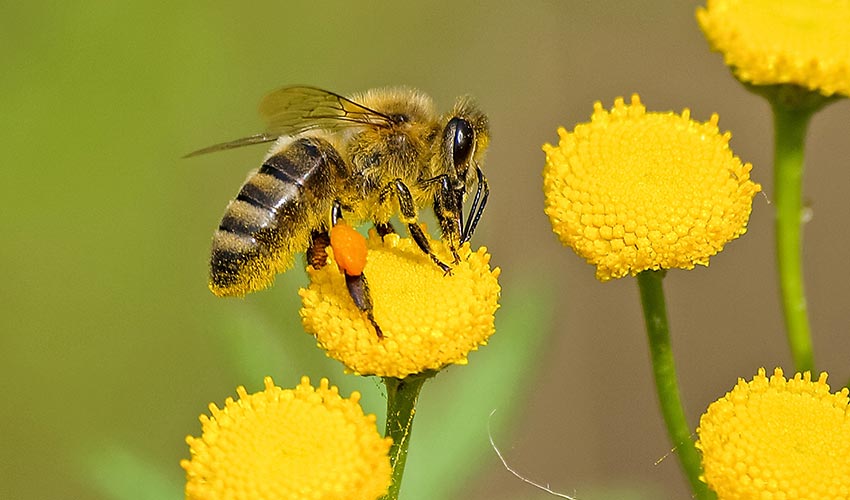
Health Benefits of Bee Propolis
Now, let us shift our attention to another enchanting bee creation known as Propolis. Try to imagine, dear readers, a substance that has the power to boost your immune system, fend off bacteria, viruses, and other disease-causing villains. This incredible bee glue, known as Propolis, is the hero of our tale. Created from a blend of nature's finest offerings - leaves, bark, flower buds, and other plant parts - bound together with bee saliva, wax, and pollen, Propolis is no ordinary substance. In the world of bees, it serves as a fortress, expertly sealing openings in their beehives and guarding against external threats to the colony's well-being.
But hey! There's even more! Propolis has a rich history in the realm of folk medicine, dating back to the days of ancient Greece, Rome, and Egypt. Even the wise Hippocrates recognised its extraordinary powers, using it to promote wound healing, both inside and out. Pliny the Elder, a famed naturalist, praised Propolis for its ability to treat tumours, muscle pain, and ulcers. And let us not, my friends, overlook the wise scholars of Persia, who recorded Propolis as a remedy for eczema and rheumatism in their ancient manuscripts. Fast forward to the present day, and Propolis continues to weave its magic into the fabric of our lives. It graces the shelves of beauty stores, adorning creams, and extracts that promote healing and combat various infections. As a supplement, it is hailed as a defender of our immune systems, empowering us in our battle against the forces of illness.
So, my dear companions on this fascinating journey, Royal Jelly and Propolis captivate our imaginations with their tales of timeless beauty and ancient medicinal powers. While we must approach their wonders with a hint of scepticism, there is no denying the allure and possibility that lies within these magical gifts bestowed upon us by the bees.
Propolis has Flavonol with Health-Boosting Properties
Research has discovered that Propolis, the hip and happening bee product, contains a flavanol called Galangin that is a real badass when it comes to fighting cancer. It's like the superhero of anti-cancer compounds, taking on melanoma, hepatoma, leukaemia and even colon cancer. In one crazy study, Galangin unleashed its powers and made cancer cells go "bye-bye" in a dose-dependent manner. It was like the colon cancer cells were shaking in their boots as Galangin activated caspase-3 and -9, and released apoptosis inducing factor from the mitochondria. Talk about a knockout punch! Galangin was also able to mess with the mitochondria membrane potential and make it go haywire, causing chaos and destruction within the cancer cells. It's like Galangin was Darth Vader and the cancer cells were the Death Star.
Not only that, but Galangin knows how to put out fires too. It can regulate nuclear factor-kappa B, PI3K/Akt, and peroxisome proliferator-activated receptor-gamma signaling in those activated microglia in the brain. This means it can curb inflammation and potentially save your brain from going full-on Alzheimer's mode. It's like a tiny firefighter, extinguishing the flames of inflammation. But wait, there's more! Galangin is a multi-tasker. It can also reduce insulin resistance by revving up the activity of hexokinase and pyruvate kinase. Basically, it tells these enzymes to get their butts in gear and start burning glucose and making glycogen. It's like a personal trainer for your cells, showing them the path to a healthier metabolism.

So, while Royal Jelly may have its own set of perks, like a VIP pass to the world of stem cells, let's not get too ahead of ourselves. However, when it comes to cancer and fertility, Royal Jelly is no joke. Studies have shown that it can boost testosterone levels and improve sperm motility in infertile men. It's like royal jelly is a dating coach for those struggling swimmers. And for those fighting the beast called cancer, Royal Jelly can help reduce the nasty side effects of chemotherapy and radiotherapy, like mucositis. It's like Royal Jelly is a superhero making sure you can still eat your favourite foods even during treatment.
And that's not all folks! Royal Jelly even has some mind-blowing anti-ageing effects on lung cells. It's like it found the fountain of youth and shared it with your lungs. Oh, and let's not forget about menopausal symptoms and Type 2 diabetes. Royal Jelly has got your back there too, making life a little more bearable. So, while we can't say for sure that Royal Jelly can tap into your stem cells and work its magic, science has shown that it has some pretty incredible powers. It's like a secret weapon hidden within the magical world of bees. Who would've thought?
“Royal jelly is the substance that worker bees produce and feed to the queen bee. Because the queen bee is the only bee that is fertile within the colony, laying around 2000 eggs per day, this substance is considered to help promote fertility in humans as well.” - Sally Moran, Getting Pregnant Faster: The Best Fertility Herbs & Super-foods For Faster Conception











